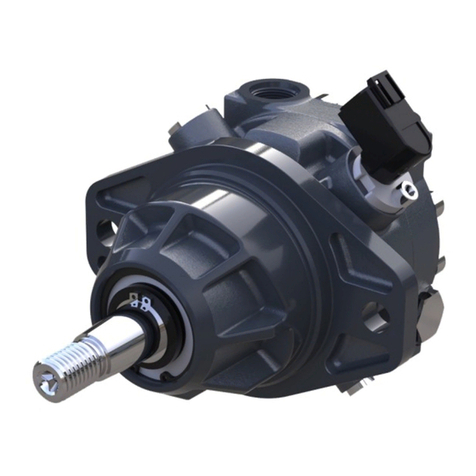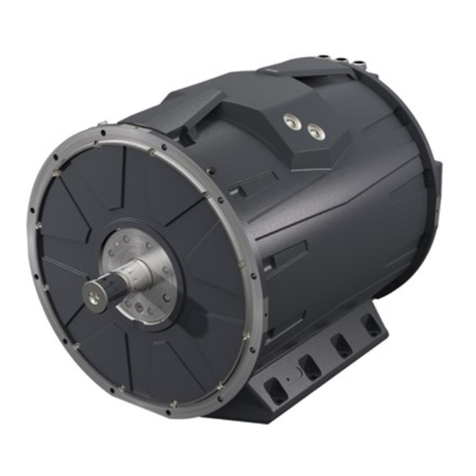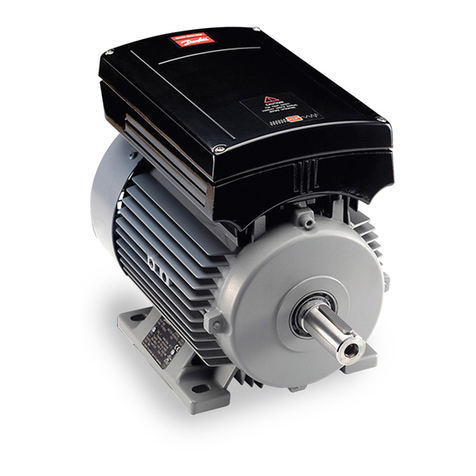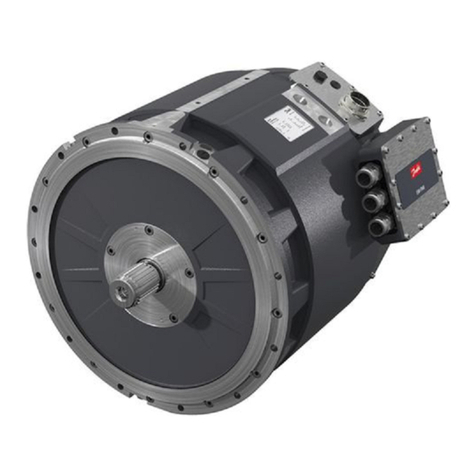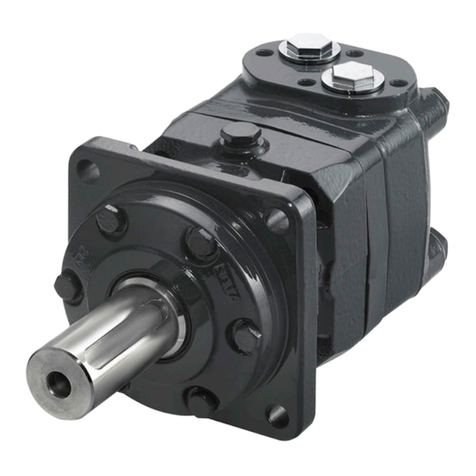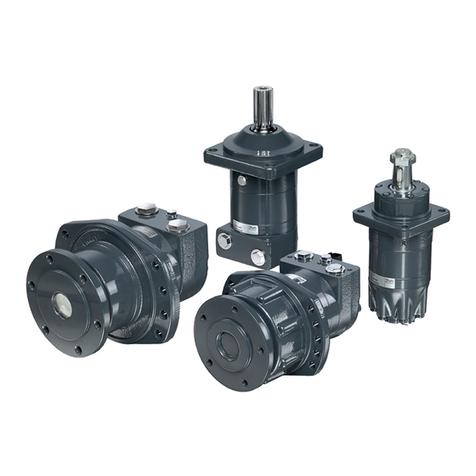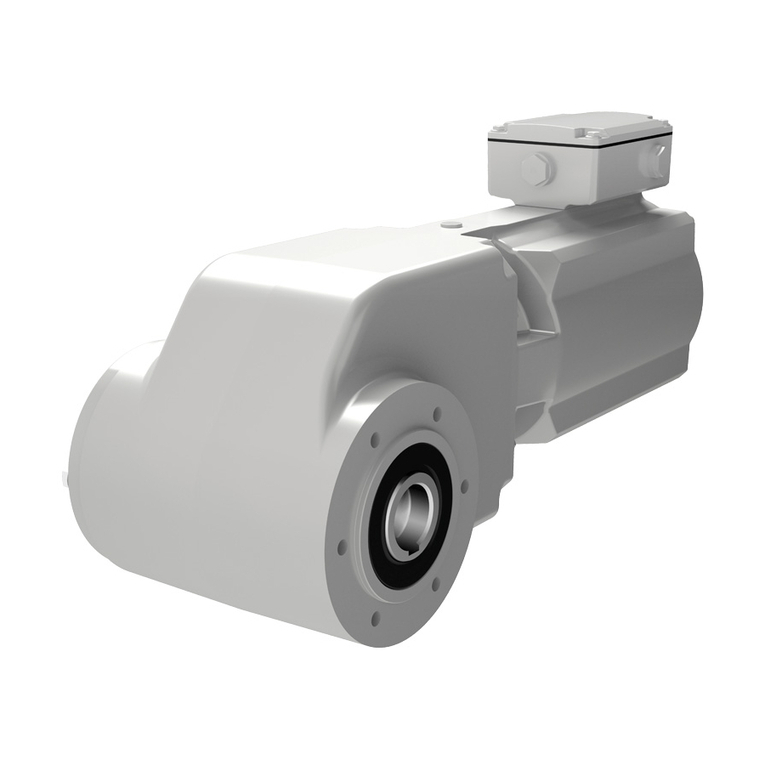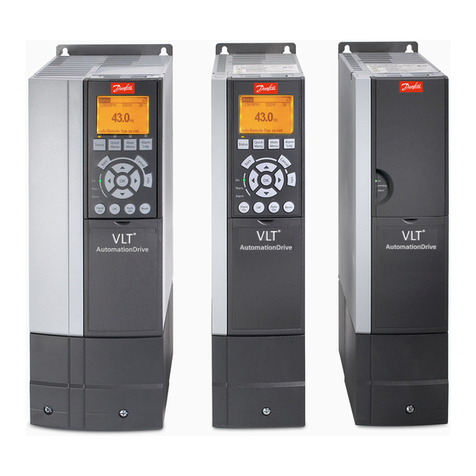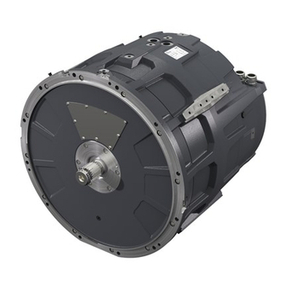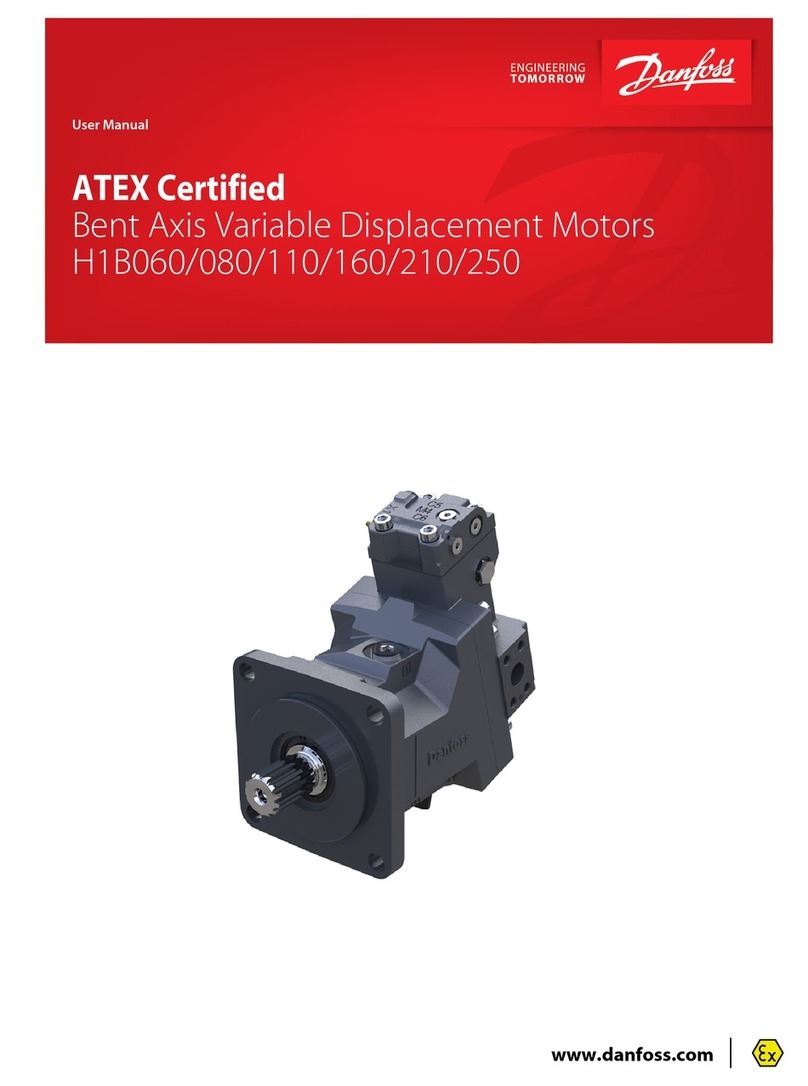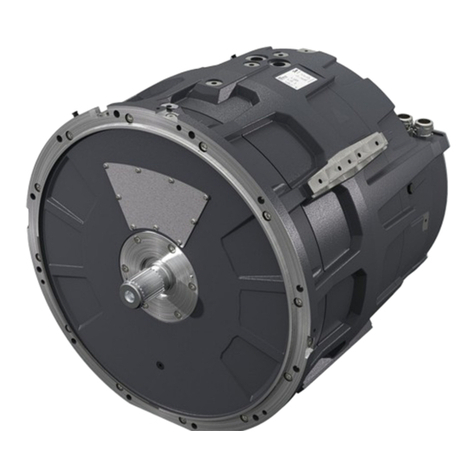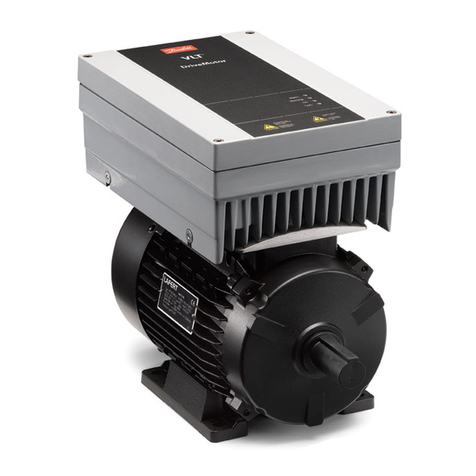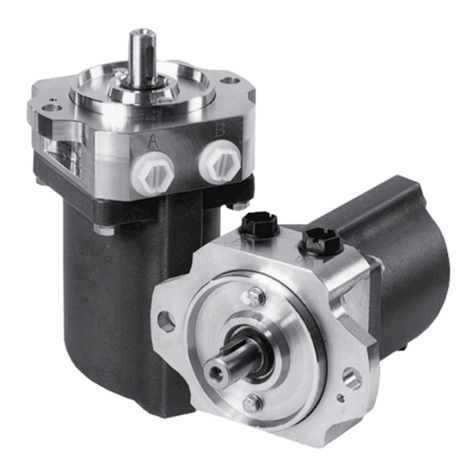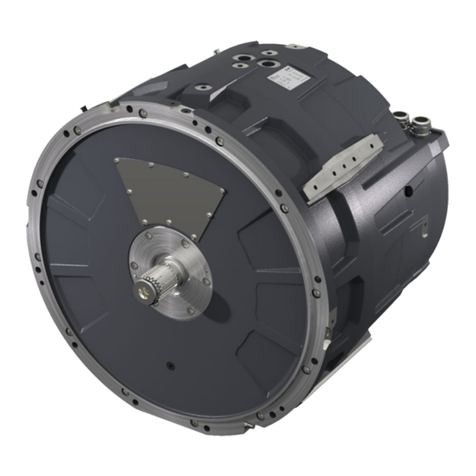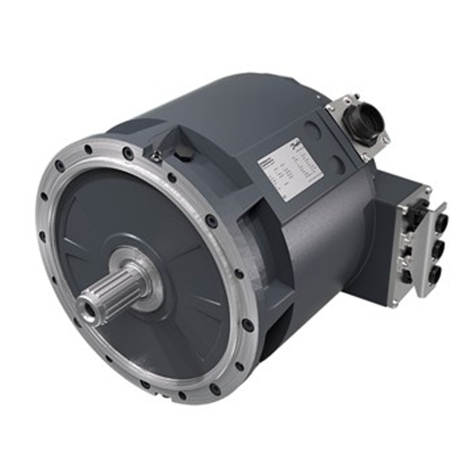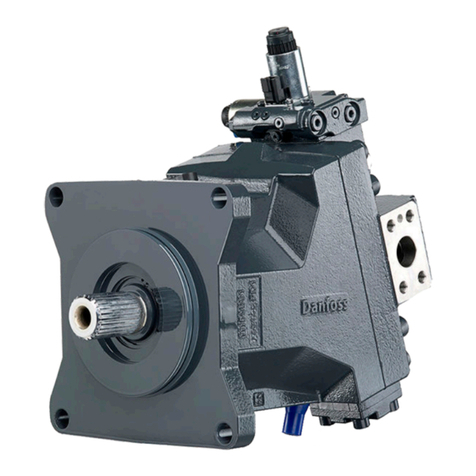
1. Install new O-rings on the pressure compensator
over-ride valve block and retain with petroleum jelly.
2. Install the PCOR valve block on the multi-function
block and install the screws.
3. Torque the screws to 11 Nm (8 ft•lbf).
4. Perform the PCOR pressure adjustments as de-
scribed below.
PROCEDURE:
The PCOR may be adjusted with the screw on the PCOR
valve block attached to the multifunction block. The setting
pressureisthatsystemgaugepressureatwhichthePCOR
causes the motor displacement to start to increase. On a
teststandthispointiswhensystemflowbeginstoincrease.
Onamachine,withthemotorshaftlockedfromturning,this
point is when maximum servo pressure becomes higher
than minimum servo pressure.
In order to measure the PCOR setting pressure on a test
stand, monitor system gauge pressure and system flow.
Provide a signal to the motor control to maintain the motor
at minimum displacement. Increase the system pressure
until system flow just starts to increase. The system pres-
sureatthispointisthePCORsettingpressure.Toadjustthe
setting, loosen the lock nut with a 1 1/16 inch hex wrench.
Turn the adjusting screw, with a large screw driver or a 1/2
inch hex wrench until the desired setting is established.
Clockwiserotationoftheadjustmentscrewwillincreasethe
pressure setting approximately 1200 psi (83 bar) per turn.
While holding the adjusting screw from turning, torque the
locknut to 52 Nm (38 ft•lbf).
ADJUSTMENT:
In order to measure the PCOR setting pressure on a
machine, monitor the system gauge pressure (M1 or M2
gaugeport),minimumservopressure(M3gaugeport),and
maximum servo pressure (M4 gauge port). Apply the park-
ing brake, block the load, etc. to keep the motor shaft from
turningduringthistest.CAUTION:Takenecessaryprecau-
tions to prevent personal injury if machine or load should
move during this test. While watching the gauges, very
slowlyincreasethepumpdisplacement,therebyincreasing
system pressure gradually (or use the pressure limiter
adjustment screw on the pump to increase the system
pressuregradually). Minimumservo pressurewill increase
with the system pressure. At about 50 psi below the PCOR
set point the minimum servo pressure will stop increasing
withsystempressureandthemaximumservopressurewill
beginto increase.As systempressure isincreased farther,
minimum servo pressure will begin to decrease and maxi-
mumservopressurewillbegintoincrease.Whenmaximum
servopressurebecomes50to100psihigherthanminimum
servo pressure the motor servo piston will begin to move
toward maximum displacement. The system pressure at
this point is the PCOR setting pressure. To adjust the
setting,loosenthe locknut witha1 1/16 inchhexwrenchand
turnadjusting screwuntil thedesired settingisestablished.
Clockwiserotationoftheadjustmentscrewwillincreasethe
pressure setting approximately 1200 psi (83 bar) per turn.
While holding the adjusting screw from turning, torque the
lock nut to 52 Nm (38 ft•lbf).
WARNING
The following procedure will require the vehicle/
machinetobedisabled(wheelsraisedofftheground,
work function disconnected, etc.) while performing
the adjustments to prevent injury to the technician
and/or bystanders.
© Danfoss, 2013 BLN-10118 • Rev AA • September 2013 1
Service Kit Instructions
Series 51
Pressure compensator over-ride
